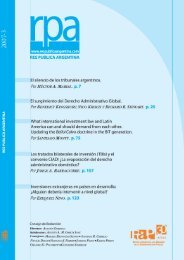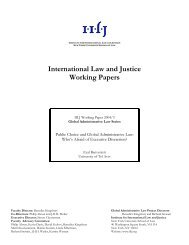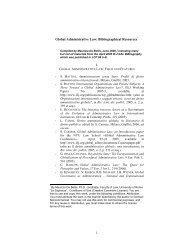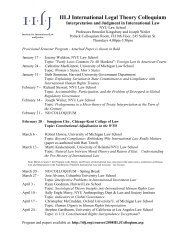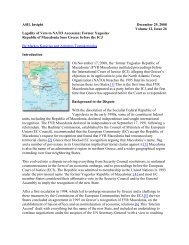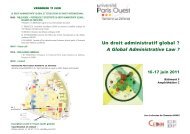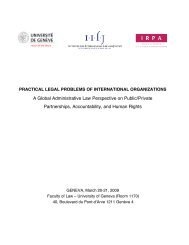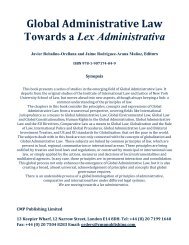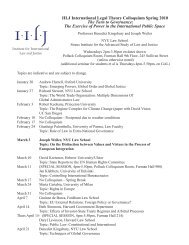brought under the dominican republic - central america - ita
brought under the dominican republic - central america - ita
brought under the dominican republic - central america - ita
Create successful ePaper yourself
Turn your PDF publications into a flip-book with our unique Google optimized e-Paper software.
scribed in its early pleadings formed only a factual pattern which derived from a<br />
<strong>the</strong>n unstated practice of <strong>the</strong> Salvadoran Government, of which (as <strong>the</strong> Claimant alleges)<br />
<strong>the</strong> Claimant first became aware on 11 March 2008 with <strong>the</strong> report of President<br />
Saca‟s speech. Accordingly, <strong>the</strong> Tribunal treats <strong>the</strong> Claimant‟s pleaded case as<br />
alleging a practice by <strong>the</strong> Respondent which came to <strong>the</strong> Claimant‟s knowledge only<br />
with President Saca‟s reported speech in March 2008, which practice is alleged to<br />
consist of ei<strong>the</strong>r a continuing or composite act in breach of CAFTA and for which<br />
<strong>the</strong> Claimant claims damages only from March 2008 onwards. The Tribunal accepts<br />
that a governmental practice, by definition, has necessarily to comprise a multiplicity<br />
of pre- or co-existing acts or omissions. It is necessary to ascertain <strong>the</strong> legal nature<br />
and timing of such a practice where a claimant‟s pleaded allegations are directed<br />
both at <strong>the</strong> acts or omissions <strong>the</strong>mselves and to <strong>the</strong> practice comprising such<br />
acts or omissions, which practice only become known to a claimant at a later date.<br />
2.59. What <strong>the</strong>n is <strong>the</strong> role of President Saca‟s speech as now alleged and explained by <strong>the</strong><br />
Claimant in its pleadings? According to <strong>the</strong> Claimant, it was not by itself a measure,<br />
but it is what made public an alleged pre-existing governmental practice:<br />
―This is why President Saca‘s March 2008 public acknowledgment of <strong>the</strong> ban is so<br />
important. Claimant does not contend that <strong>the</strong> President‘s statement is by itself <strong>the</strong><br />
measure at issue. But <strong>the</strong> President‘s statement did provide critical information,<br />
given <strong>the</strong> inherent difficulty in discerning <strong>the</strong> measure at issue, and as such may be<br />
seen as <strong>the</strong> consummation point of <strong>the</strong> administration‘s action and inaction<br />
constituting <strong>the</strong> offending measure at issue in this arbitration.‖ 46<br />
2.60. From this and o<strong>the</strong>r explanations from <strong>the</strong> Claimant, it follows that, although <strong>the</strong><br />
President‟s speech is not alleged to be a measure by itself, it is <strong>the</strong> point in time<br />
when, according to <strong>the</strong> Claimant, its dispute with <strong>the</strong> Respondent arose. It would be<br />
possible to use o<strong>the</strong>r language to describe <strong>the</strong> emergence of this dispute, as employed<br />
by both Parties in this case (e.g. “born”, “crystallised” etc); but all <strong>the</strong>se<br />
terms convey <strong>the</strong> same concept; and <strong>the</strong> Tribunal here prefers substance to semantics.<br />
46<br />
Jurisdiction Rejoinder, § 238.<br />
Part 2 – Page 18



